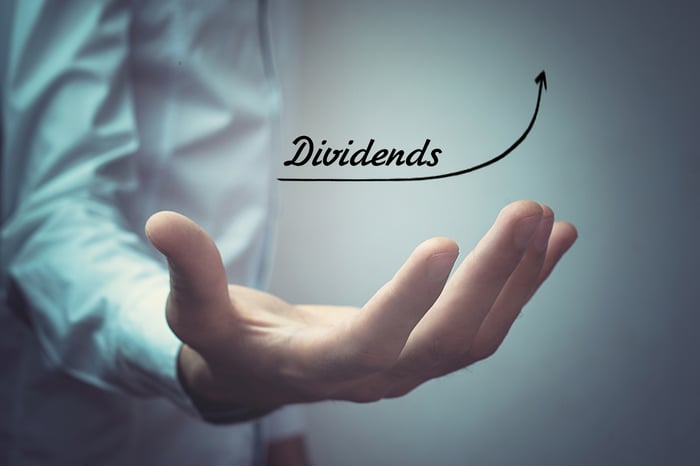Many dividend investors probably rate a company's yield higher than most other attributes. Canadian pipeline giant Pembina Pipeline (PBA 1.72%) would likely score a high rating since it yields 4.8%, which is more than double the average of the S&P 500.
However, yield alone is not the best way to measure dividend greatness. That's because dividend growth is what drives the best returns over the long term. Companies that routinely increased their dividends generated a 9.6% total annual return over the past several decades, according to a study by Ned Davis Research. Those that maintained their payouts, on the other hand, only produced a 6.9% total annual return, which underperformed the S&P 500's return of 7.3%.
Given that growth matters to dividend greatness more than yield, let's see how Pembina Pipeline stacks up against that measurement.

Image source: Getty Images.
Drilling down into Pembina Pipeline's dividend history
Pembina Pipeline is unique among dividend stocks in that it pays investors monthly, instead of quarterly like most other companies. It has made that payment every month since it switched over to that schedule in early 1998, just a few months after paying its initial quarterly dividend in late 1997. Overall, it has paid out 7.8 billion Canadian dollars ($5.9 billion) since it began paying dividends in 1997.
Pembina has increased its dividend in most years. While the company has had some stretches where it held the payout flat for a few years, it has boosted it in each of the last eight years. Overall, it has grown its payout at a 4.5% annual rate over that time frame, including by 5.3% over the past year. That steady growth has enabled the company to generate a more than 475% total return since 2009, which has outpaced the 355% total return of the S&P 500 over the same time frame.

Image source: Getty Images.
A look at what's ahead for Pembina Pipeline's dividend
While Pembina has been an excellent dividend growth stock over the past several years, that doesn't necessarily mean it will continue to be one. On the one hand, it's impossible to predict whether it will be able to keep increasing its payout. However, we can take a closer look at the company's financial profile and growth prospects to see the likelihood that dividend growth will continue.
The company has built its financial foundation on four main pillars that it uses to maintain a sound profile. Here's how it currently stacks up against those guidelines:
- Get at least 80% of adjusted EBITDA (earnings before interest, taxes, depreciation, and amortization) from predictable fee-based sources: In 2019, fees supplied 85% of its earnings.
- Target a dividend payout ratio of less than 100% of fee-based cash flow (and an even lower rate overall): In 2019, it paid out 78% of fee-based cash flow and just 56% of overall cash flow.
- Target at least 75% credit exposure from investment-grade customers: In 2019, 82% of its EBITDA came from creditworthy customers.
- Maintain a strong BBB credit rating: It achieved this in 2019 with metrics at the low end of its target range.
By staying well within its financial guardrails, Pembina Pipeline has the financial flexibility to continue expanding its operations, which should give it the fuel to keep growing its dividend. The company recently used this flexibility to make a needle-moving acquisition. It's buying Kinder Morgan Canada (KML) along with the U.S. portion of the Cochin Pipeline, from Kinder Morgan. Pembina is paying CA$4.35 billion ($3.3 billion) for these assets, which will immediately boost its earnings and cash flow. Pembina has already said it will increase its dividend by 5% once the deal closes early next year.
Meanwhile, the company has another CA$5.7 billion ($4.3 billion) of expansions under construction, which should come online in the 2020-2023 time frame. That backlog of projects provides the company with excellent future growth potential. Pembina also has another CA$4 billion ($3 billion) of expansions in development, and could invest up to CA$6.5 billion ($4.9 billion) to build an LNG (liquefied natural gas) export terminal on the coast of Oregon. Its success in securing these opportunities would further enhance the visibility of its long-term growth prospects.
Given Pembina's strong financial profile and large backlog of projects under construction and in development, it seems likely that the company can keep growing its dividend for the next several years.
Verdict: Pembina Pipeline is a great dividend stock
Pembina Pipeline has grown its dividend at a healthy pace for the last several years, which has fueled market-crushing total returns. That trend appears poised to continue, given the company's pending acquisition of Kinder Morgan Canada and its large slate of expansion projects. Pembina is a great stock for income-seeking investors, especially those who'd like to be paid monthly.



